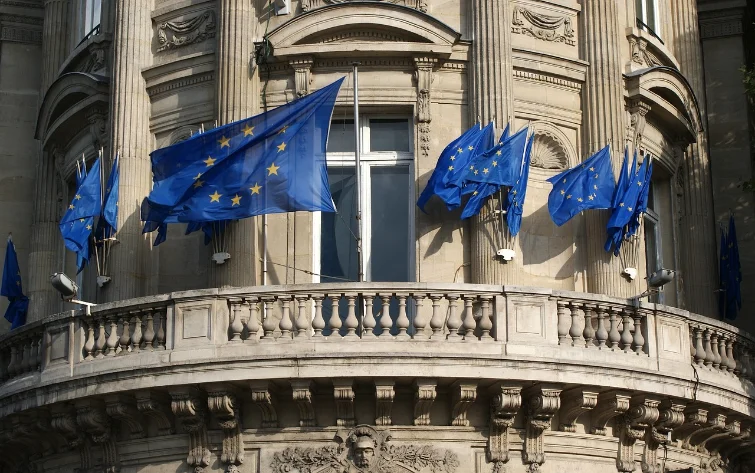“Jerome Powell, the chairman of the Federal Reserve, stated on Thursday that it might be necessary to make it more difficult to borrow money in order to contain inflation, given the robust U.S. economy and the competitive labor market. However, he also acknowledged that the increasing interest rates in the market could potentially reduce the need for the Federal Reserve to take action.
In his speech at the Economic Club of New York, Powell seemed to be in agreement with his colleagues at the Federal Reserve who have recently stated that the bond market is now helping the central bank achieve its goals. He suggested that the rising yields in the bond market were contributing to tighter financial conditions and might, to some extent, reduce the necessity for the Federal Reserve to raise its own interest rates.”
While Jerome Powell didn’t explicitly support this idea, the financial markets seemed to interpret it that way. As Powell spoke, investors increasingly believed that the Federal Reserve won’t raise its short-term interest rates anymore. Now, futures tied to the Fed’s policy rate indicate less than a one-in-three chance of another rate increase this year, down from about 40% before his speech.
At the same time Powell was speaking, the interest rates on 10- and 30-year Treasury bonds were going up.
Powell explained that when the Fed raises its benchmark interest rate, the goal is to influence financial conditions. He pointed out that bond markets are currently leading to tighter financial conditions for several reasons, including a positive outlook for the strength of the U.S. economy, independent of any expectations regarding the Fed’s actions.
This is an important difference, Powell emphasized. If bond investors were only raising long-term bond yields because they believed the Fed was about to increase its own short-term policy rate, the central bank would have to go through with it, or long-term rates would decrease.
It seems like a new situation is unfolding, one where Jerome Powell and some of his colleagues are suggesting that changes in the Federal Reserve’s short-term interest rates might be replaced by market-driven adjustments in lending.
Shaun Osborne, who is the chief foreign exchange strategist at Scotiabank, commented on this, saying, “Financial conditions are getting tighter, there’s no way around it. This shift leans towards the Federal Reserve doing less rather than more. I believe we’ve reached a point where things are stabilizing.”
Powell’s statements were quite balanced. He acknowledged that the strong economy was a reason to consider more interest rate hikes, but he also highlighted emerging risks and the need for caution.
Now, the focus is on upcoming data to see if the economy is slowing, the job market is cooling, and price pressures are decreasing, as anticipated by U.S. central bankers. Alternatively, some analysts believe that the economy will remain strong and inflation will bounce back.
Powell mentioned, “We are paying close attention to recent data that shows the economy is holding up well, and there’s still demand for labor. If we see more evidence of the economy performing above expectations or if the job market remains tight, it could pose a risk to our progress on controlling inflation and may require us to implement more stringent monetary policies.”
Since the Federal Reserve started increasing interest rates in March 2022, the unemployment rate hasn’t changed much from its current level of 3.8%. This is below the point at which most Federal Reserve officials believe it could lead to inflation. Additionally, the overall economic growth has generally stayed above the 1.8% annual growth rate, which Federal Reserve officials consider as the economy’s fundamental potential.
Fed Chair Jerome Powell mentioned that they are taking a cautious approach when considering the need for further rate hikes. This statement reinforces the expectation that the Fed will likely keep its benchmark interest rate within the current range of 5.25% to 5.5% at the upcoming meeting on October 31 to November 1.
Powell pointed out that there are signs of the job market cooling down, with some important measures approaching levels seen even before the pandemic. In addition, inflation has been steadily decreasing from its high point last year.
He also highlighted several new “uncertainties and risks” that the Federal Reserve needs to consider as they try to strike a balance between preventing inflation from rising too much and ensuring the economy isn’t unnecessarily constrained.
Jerome Powell mentioned that there are new uncertainties for the economy due to recent events, like the attack on Israel by the Palestinian militant group Hamas, which he described as “horrifying.” The Federal Reserve’s role is to keep an eye on these events and their potential economic effects, although these outcomes are uncertain. Powell personally expressed his concern for the attack and the potential loss of innocent lives.
However, data since the last Federal Reserve meeting has shown unexpected positive trends, such as job growth picking up, retail sales not slowing down as predicted, and mixed signals on whether inflation is on track to reach the Fed’s 2% target.
The current challenge for the Fed is to determine whether the rise in long-term bond yields, influenced by the market, will help cool the economy, which could aid in controlling inflation, without the need for further Fed intervention. The officials are cautious because they’re not entirely convinced that price pressures are on a steady decline.
Powell emphasized that while there has been progress in reducing inflation since it peaked last year, one of the Fed’s key inflation measures remained at 3.7% through September, nearly double the central bank’s target. He stressed that it’s uncertain how long these lower inflation readings will last, and it may take some time for inflation to reach the 2% goal. Powell and his colleagues are committed to achieving sustainable inflation reduction to 2%.





